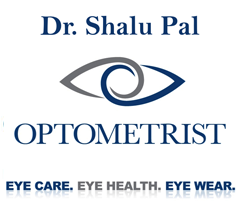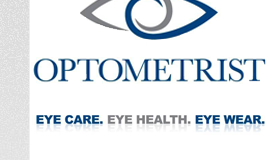Contents |
Ptosis (Drooping Eyelid)
Gravity loss of elastic tissue in the skin frequently contribute to this sagging eyelid tissue. Ptosis refers to an upper eyelid that droops. In this condition the eyelid is situated over more of the eye at times even blocking out the pupil. It may either be congenital or acquired. Most cases of age-related ptosis – called involutional – come on gradually after age 60 as part of the normal aging process. Congenital cases of ptosis can be easily spotted because children will tilt their heads back or raise their eyebrows to lift the eyelid. If the condition results in occlusion of the pupil the infant or young child will almost certainly develop amblyopia (lazy eye). Surgery should be considered at an early age if vision is not developing properly.
Some other signs and symptoms include:
- eye irritation in affected eye
- difficulty closing the eye completely
- eye fatigue or headaches from straining to keep the eye open
- obstruction of the upper part of vision (superior visual field)
- double vision
What Causes Ptosis?
A muscle called the levator holds the upper eyelid in proper position and lifts it up. Anything that affects this muscle will also affect the lid position. Ptosis occurs when the levator tendon (the fibrous connection between the levator muscle and the lid) stretches loosening its attachment to the eyelid and causing it to sag.
Ptosis: Normal Eye:
Less common causes include injury during previous eye or orbital surgery
and neurological or muscular problems; sometimes the levator muscle or its nerve supply can be damaged because of a systemic condition such as diabetes.
A comprehensive eye exam is needed to determine the cause of ptosis. some people appear to have the condition but do not actually have a problem with the levator muscle. Instead they have pseudoptosis or false ptosis. Some causes of pseudoptosis are a disproportionate amount of eyelid skin or unusual facial characteristics. Sometimes the protrusion of one eye may make the other eye look as if it had ptosis. It is best to visit your eye care practitioner to verify the etiology of your specific case.
Treatment
If the ptosis is not affecting your vision and you are not concerned with its appearance nothing needs to be done about it.
Should you decide to have the eyelid repaired surgically the exact procedure used will depend on the cause. For example if a levator tendon has pulled away from the lid reattaching the tendon can correct the ptosis. If the muscle is weak a surgical tuck will tighten the tendon to provide additional lift. Surgery is usually performed on an outpatient basis under local anesthetic and it takes less than an hour.
What Are the Risks of Surgery?
Sometimes the operated eyelid does not close well for a few weeks after the surgery. The partially open eye allows excessive exposure to the air and this can cause the surface of your cornea to become dry especially during sleep. You awaken to a burning or scratchy sensation in your eye. The problem is usually temporary and lubricating drops or ointments can be prescribed to alleviate the dryness and the discomfort.
Less likely is the possibility that the levator muscle will not respond as expected resulting in lid positions that do not “match” one another. If that happens a second operation may be necessary to readjust the alignment.
As with any surgery around the eye there is a small risk for bleeding, infection,scarring double vision, or even loss of vision. Fortunately these complications are very rare and if they are discovered quickly most can be treated successfully.
Outcome
After the sutures are removed and the swelling has subsided you may be surprised not to see a scar. That is because the incision site is usually hidden in a natural eyelid crease or on the underside of the upper lid. The surgical correction of ptosis is normally uncomplicated and achieves the desired result. Most patients are delighted with their improved appearance and their unobstructed vision. But as with any other type of surgery there is always risk. Make sure you contact your eye care practitioner to see if this is the right surgery for you.





